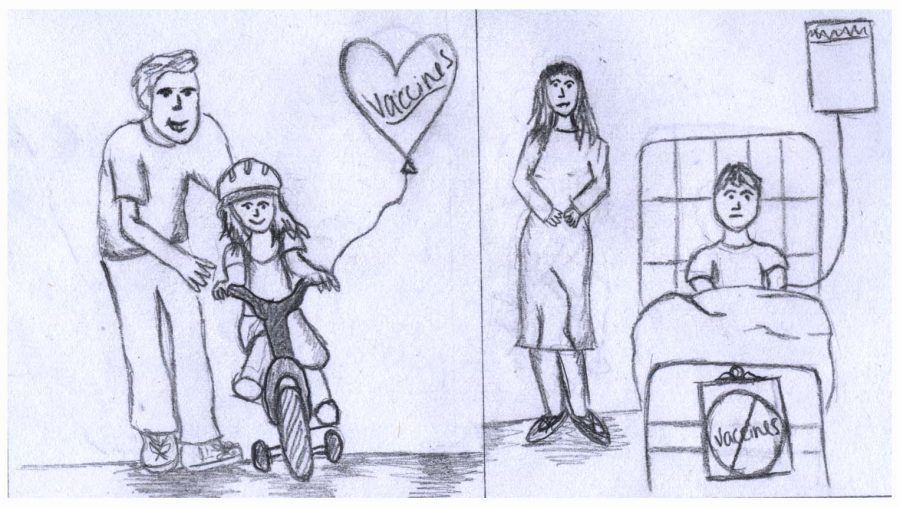April 16, 2014
Royal Purple Editorial Staff Opinion
Before Jonas Salk introduced his polio vaccine in 1955, more than 35,000 children contracted the polio virus in the United States annually. Yet by 1957, only 2,500 children were diagnosed with the disease, according to the United States Centers for Disease Control.
Since 1965, only 61 cases of paralytic polio have been reported in the United States.
Although these numbers are staggering, an anti-vaccination sentiment is growing in the United States. This movement is dangerous for kids or anyone who comes into contact with kids, and it is built on a foundation of facts that have been disproven.
Groups of people have opposed vaccines as far back in history as 1802, when the cowpox vaccine was a source of anxiety for some. When it was published that introducing small amounts of the disease to a person’s system could immunize them, a political cartoon circulated displaying people turning into cows and chickens shortly after being vaccinated.
The modern argument against vaccines was spurred by a study published in “The Lancet” by Andrew Wakefield in 1998. The study claimed the Measles, Mumps and Rubella vaccine could easily cause autism in children.
In 2010, the findings of the study were found to be falsified, and “The Lancet” retracted the article. Wakefield also was banned from practicing medicine in the UK, according to sciencebasedmedicine.org.
By 2010, however, the anti-vaccine movement was in full swing, and the damage had already been done.
That damage includes 29 people with mumps in California in 2012 and a 175-person outbreak of measles in Kansas in 2013. More locally, there have been four whooping cough outbreaks in Wisconsin between 2011 and 2013, effecting nearly 8,000 people, according to a map on the Council of Foreign Relations website.
These diseases, which are wholly preventable by vaccine, are extremely dangerous and not to be taken lightly.
Before a vaccine was implemented in 1980, measles killed 2.6 million people annually worldwide, according to the CDC.
The fatality rate for whooping cough for children under three years old is nearly 1.5 percent, according to the California Department of Public Health.
These diseases are highly contagious, so it is dangerous for children to be around them, especially when they are not vaccinated. Unfortunately, even people who are vaccinated have a chance to contract these illnesses, according to the CDC.
It’s common for UW-Whitewater students to go home on the weekends, where they may be around younger brothers or sisters. Professors and employees at the university may be going home to young children as well, so it is vital that these children are vaccinated, or they could contribute to a spread of these diseases throughout campus, which could easily be fatal to some students.
Although the arguments against vaccines have commonly been disproven through scientific fact, there are still people who publically endorse anti-vaccine agendas. The most famous of these has been Jenny McCarthy, a host on ABC’s “The View.”
Most recently, Kristin Cavalleri, former member of the shows “Laguna Beach” and “The Hills” and wife of Chicago Bears quarterback Jay Cutler, has come out against vaccination.
“There are very scary statistics out there regarding what is in vaccines and what they cause: asthma, allergies, ear infections, all kinds of things. And we feel like we’re making the best decision for our kids,” Cavallari said in an interview with “Watch What Happens Live” in March.
What is scarier than those statistics, many of which have been disproven, are the mortality rates for the diseases that they prevent, especially among children such as her own.
The best way to stop these very preventable deaths and lower these fatality rates is for all parents to vaccinate their children.


